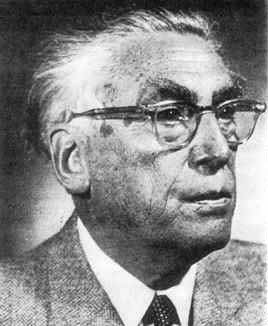


 تاريخ الرياضيات
تاريخ الرياضيات
 الرياضيات في الحضارات المختلفة
الرياضيات في الحضارات المختلفة 
 الرياضيات المتقطعة
الرياضيات المتقطعة
 الجبر
الجبر
 الهندسة
الهندسة 
 المعادلات التفاضلية و التكاملية
المعادلات التفاضلية و التكاملية 
 التحليل
التحليل
 علماء الرياضيات
علماء الرياضيات |
Read More
Date: 3-9-2017
Date: 3-9-2017
Date: 20-8-2017
|
Died: 6 November 1979 in Washington DC, USA

Alexander Weinstein studied at Astrakhan, at this stage planning to study astronomy. After graduating he studied at the University of Würzburg and the University of Göttingen during 1913/14. He moved to Zurich and he continued his interest in astronomy carrying out observations. He studied under Weyl and was awarded a doctorate in 1921. During 1922 Weinstein worked as an assistant at the University of Leipzig.
Weyl recommended Weinstein for a Rockefeller Fellowship and after this was awarded Weinstein spent 1926 and 1927 in Rome working with Levi-Civita. He returned to Zurich as Weyl's assistant, then in 1928 he was appointed to Hamburg.
From Hamburg Weinstein moved to Breslau and, by 1933, he was being sought by Einstein as a collaborator in Berlin. However 1933 was the year that the Nazis came to power and Weinstein, being of Jewish background, could not remain in Germany. He therefore had to give up the chance of working with Einstein and instead he went to the Collège de France in Paris where he worked with Hadamard. He was awarded the degree of Docteur ès Sciences Mathématiques by Paris in 1937.
By 1940 World War II caught up with Weinstein in Paris and he left for the United States. There he taught at a number of different places such as the Free French University in New York, the Carnegie Institute of Technology and the University of Maryland. He also worked in Canada at the University of Toronto for a while. He was also a member of Birkhoff's research group at Harvard doing war work.
For 18 years he was principal investigator at the Institute for Fluid Dynamics and Applied Mathematics at the University of Maryland.
Weinstein's research covered a wide range of topics. He is famed for solving a variety of boundary value problems. For example he solved Helmholtz's problem for jets, giving the first uniqueness and existence theorems for free jets in a series of papers from 1923 to 1929. He examined boundary problems in an infinite strip, giving hydrodynamic and electromagnetic applications.
Weinstein's method was developed to give accurate bounds for eigenvalues of plates and membranes. In examining singular partial differential equations he introduced a new branch of potential theory and applied the results to many different situations including flow about a wedge, flow around lenses and flow around spindles.
After retiring in 1967, Weinstein continued research at the American University, then, from 1968 to 1972 he worked at Georgetown University.
Books:
Articles:



|
|
|
|
دراسة تحدد أفضل 4 وجبات صحية.. وأخطرها
|
|
|
|
|
|
|
العتبة العباسية تستعدّ لتكريم عددٍ من الطالبات المرتديات للعباءة الزينبية في جامعات كركوك
|
|
|